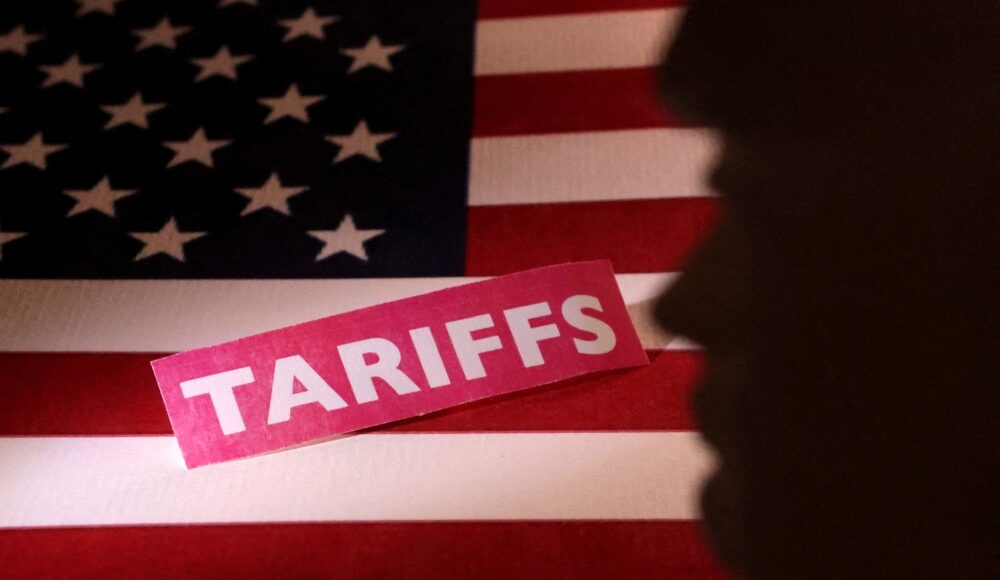APRIL 15 — Trump’s misleadingly named “reciprocal tariffs” have elicited many reactions focused on the tariff’s economic impacts and the absurdity of the tariff calculations. The sweeping tariffs defy economic rationality, calculated as the crude ratio of a given country’s trade balance with the United States (US) over its total exports (and only applied to trade in goods). Amid the chaos and disorder, there is a sense of urgency that a small trading nation like Malaysia must come up with quick responses, although the call to stay calm and not retaliate is indeed the correct one (Yin 2025).
However, it is also important to step back from Trump’s capriciousness and look at more systemic issues in coming up with measured responses. While the assumption that Trump is out to disrupt the international trading system is not inaccurate, it distracts from a more complex understanding of the problem if we stop there. Trump is not an anarchist, but his irrational tariffs have an economic logic, no matter how flawed.
To understand Trump and his team’s logic, one can look at a policy paper written by Stephen Miran, the current chair of the Council of Economic Advisers (CEA), an inner circle of Trump. The paper, titled A User’s Guide to Restructuring the Global Trading System, arguably provides one of the most coherent justifications for the tariffs. It was published in November 2024 before Miran was appointed to the CEA.
In the paper, Miran states that the root problem of the present economic order is “persistent overvaluation of the dollar and asymmetric trade conditions” (Miran 2024, 5). In other words, the problem is understood as broader than trade deficits but one of maintaining the dollar’s hegemony as the world’s reserve currency while dealing with the consequences of trade deficits arising from the dollar performing this role.
Trump is not an anarchist, but his irrational tariffs have an economic logic, no matter how flawed. — Reuters pic
The overvalued dollar, in turn, erodes US export competitiveness and hollows out its manufacturing production. Trade deficits that follow will theoretically grow to such an extent that they eventually threaten the dollar’s status as reserve currency and cause major global instabilities — or what has been called the Triffin dilemma, named after the Belgian economist Robert Triffin.
Miran recognises trade-offs inherent in a Triffin world. As the consequences of being the reserve currency have economic (cheaper borrowing and richer currency) and security (using financial systems to exert foreign and security policy e.g., freezing assets, cutting access to SWIFT) dimensions, the core trade-off is expressed as that “between export competitiveness and financial power projection” (Miran 2024, 11).
In this sense, we need to appreciate that we are not just grappling with an economic problem, albeit important, but are ultimately contending with the issue of power. Miran could not have been clearer in the sentence that follows, “Because power projection is inextricable from the global security order America underwrites, we need to understand the question of reserve status as intertwined with national security.” (Miran 2024, 11)
Although Miran does not see risks of the US reaching the tipping point of the Triffin dilemma anytime soon, he argues that a shrinking share of US GDP in the world economy, coupled with decreasing military strength, means that it is becoming increasingly difficult for the US to provide a “global defense shield to liberal democracies” (Miran 2024, 11). He points to rising threats from China and Russia, exacerbated by their increasing trade and investment relations with US allies, as new geoeconomic realities — resulting in the Trump camp losing trust in their allies to prop up its weapons supply chains.
Even though the US is facing the same root problem (of persistent overvaluation of the dollar and asymmetric trade conditions) as that of the Plaza Accord in 1985, this new geoeconomic world suggests it now needs a “21st Century version of a multilateral currency agreement” (Miran 2024, 29). Miran takes some creative license to call this currency arrangement the “Mar-a-Lago Accord” after Trump’s luxury resort.
Miran’s unravelling of the Mar-a-Lago Accord suggests we must be wary of two misconceptions about Trump’s tariffs: first, tariffs are merely economic, not political, tools; second, tariffs can be evaluated in isolation from currency. Instead, as the logic goes, the policy strategy is not about using tariffs to reduce trade surpluses but rather leveraging tariffs to force a currency accord to induce a global trade rebalancing.
Miran posits that currency offset during the US-China trade war of 2018-2019 dampened the effects of the tariffs, where after-tariff import prices (in dollar terms) remained the same. There was, thus, a marginal effect on redirecting trade flows to the US. Miran goes on to assert that “it is of course possible that currency offset does not occur in the next iteration of tariffs, but considering plausible reasons why that might be the case, offset seems more likely than not.” (Miran 2024, 21)
Given this, the Mar-a-Lago Accord will operate based on “the stick of tariffs” and “the carrot of the defense umbrella and the risk of losing it.” (Miran 2024, 29) The political function of tariffs and their sequenced deployment with currency is clearly expressed, “The difficulty in persuading trading partners to agree to such an approach is a good reason for currency tools to be used after tariffs, which provide additional leverage in negotiations. If a currency agreement is reached, removing tariffs can be a big part of the incentive.” (Miran 2024, 30)
Imposing differentiated tariffs to gain negotiating leverage on the currency front is linked with Scott Bessent’s (the US Treasury Secretary) idea of dividing the world into buckets according to tariff rates. Countries’ actions to align with US interests will move them to more favourable buckets, i.e., getting better tariff reduction and military protection terms.
However, Miran’s criteria for moving countries between buckets transcend tariff and currency policies. They are not just about reducing trade surpluses or reversing currency suppressions but also include foreign policy questions like: “Does the nation side with China, Russia, and Iran in key international disputes, for instance at the United Nations?” and “Do the nation’s leaders grandstand against the United States in the international theater?” (Miran 2024, 23) Tariffs and currency are economic tools deployed to reinforce US interests, but they will not be based solely on economic considerations.
Friedrich Nietzsche, the German philosopher, once wrote, “There is always some madness in love. But there is also always some reason in madness”. Trump’s tariffs may not be “madness in love”, but if Miran’s paper is any indication of Trump’s “reason in madness”, then what is at stake is essentially US hegemony. This hegemonic order is ultimately behind the current disorder — a deeper and more perplexing problem underlying trade imbalances and irrational tariffs.
References:
* Christopher Choong Weng Wai is the Deputy Director of Research at Khazanah Research Institute
** This is the personal opinion of the writers or publication and does not necessarily represent the views of Malay Mail.





